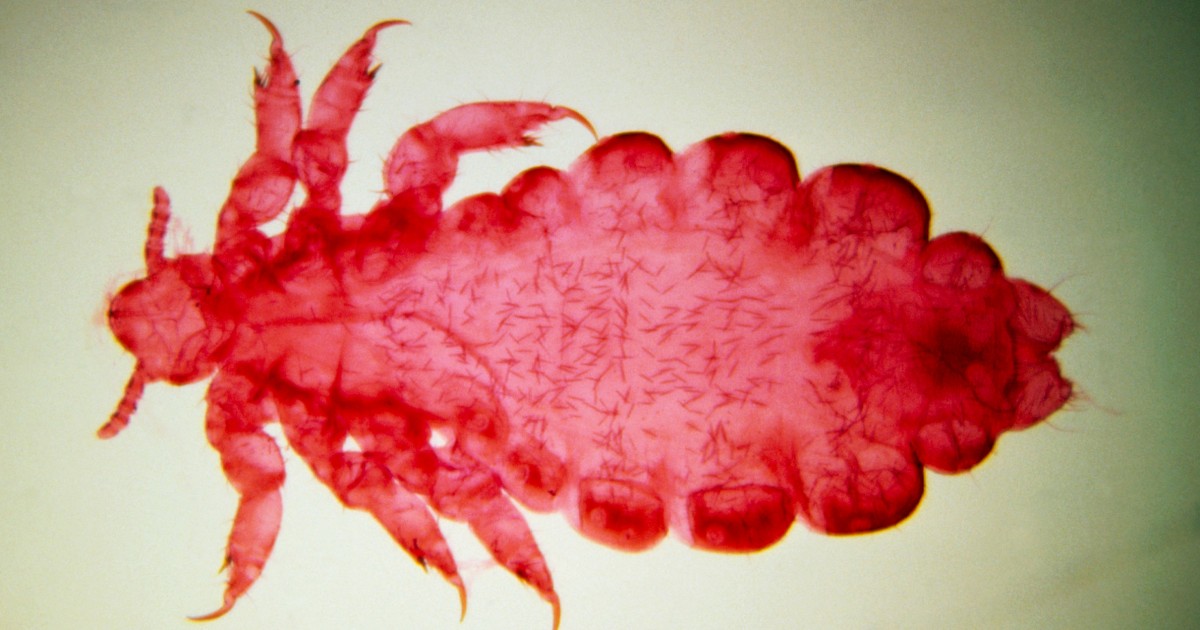
Scientists have long debated whether human body lice might have helped drive the rapid spread of the bacteria responsible for the deadly plague in the Middle Ages, known as the Black Death.
It’s clear that rat fleas played a major role, but some population studies have suggested that bites from those fleas might not have been enough to drive a plague that killed tens of millions in Europe, Asia and other countries in the 14th century.
A study published Tuesday in PLOS Biology suggests that body lice may be more efficient at transmitting the plague bacteria, Yersinia pestis, than previously thought and thus might have helped drive up the numbers in the bubonic plague pandemic.
Body lice are parasites that can spread disease and usually affect people living in crowded conditions. They’re different from head lice, which are far more common in the U.S. and typically affect school-age kids. Both insects feed on human blood.
“There’s a long-standing medical historical debate about the Black Death pandemic in Europe,” said senior author Joe Hinnebusch, who was a senior investigator at the National Institute of Allergy and Infectious Diseases Laboratory of Bacteriology in Hamilton, Montana, when the research was being performed. He is now retired.
Studies looking at the speed with which the plague spread in the Middle Ages have suggested that another blood-sucking bug might have played a role, Hinnebusch said.
The researchers first examined the possibility that human fleas — there are thousands of species of fleas and some specifically bite humans — could have helped spread the disease. It turned out that human fleas weren’t good at spreading the bacteria.
Next, Hinnebusch and his team turned their attention to body lice. The researchers conducted a series of laboratory experiments in which body lice were allowed to feed — through a specially constructed artificial skin — on blood samples infected with Yersinia pestis at levels similar to what’s found in actual human plague cases. Sure enough, the lice picked up the bacteria.
Once infected, the lice were placed on another bit of artificial skin and allowed to suck sterile blood through it. When the researchers later tested the remaining formerly sterile blood sample, they found that it had indeed been infected by the interaction with the lice.
“You could see transmission as early as day one, but more bacteria were transmitted on days three to seven after infection,” Hinnebusch said.
While the plague cases are mostly a thing of the past in the U.S., each year anywhere from one to 17 cases are reported, according to the Centers for Disease Control and Prevention. Most have occurred in the rural West. The plague bacteria is thought to have been carried to the U.S. around 1900 by rat-infested ships, according to the CDC.
The new study may help explain what happened in the Middle Ages, said Dr. Meghan Brett, an associate professor of infectious diseases at the University of New Mexico in Albuquerque.
“About 30% to 50% of the population died during that pandemic,” she said. “One of the things that’s been hard to explain is how it was transmitted. It’s been suggested that rats and fleas were not sufficient. So this study is actually quite interesting and has potentially come with the explanation.”
Because the new study was performed in the lab, it’s not possible to know what proportion of real-life infections were transmitted by body lice, said Dr. William Schaffner, a professor of infectious diseases at the Vanderbilt University Medical Center.
“We’ve known that rats and other rodents played a role for ages,” Schaffner said. “Now we know that body lice can transmit the bacteria too.”
In the U.S., people usually contract plague by being bitten on the leg by prairie dog fleas when hunting or hiking near the rodents’ burrows, Schaffner said.
Once infected, the lymph glands in the person’s groin swell. Quick medical attention and treatment with antibiotics can clear up the infection.
But the scenario isn’t always so positive.
If the person is in a dusty environment and they breathe in the bacteria, they can develop pneumonia, Schaffner said. “That is very bad,” he said. “Within a few days they can become mortally ill.”






